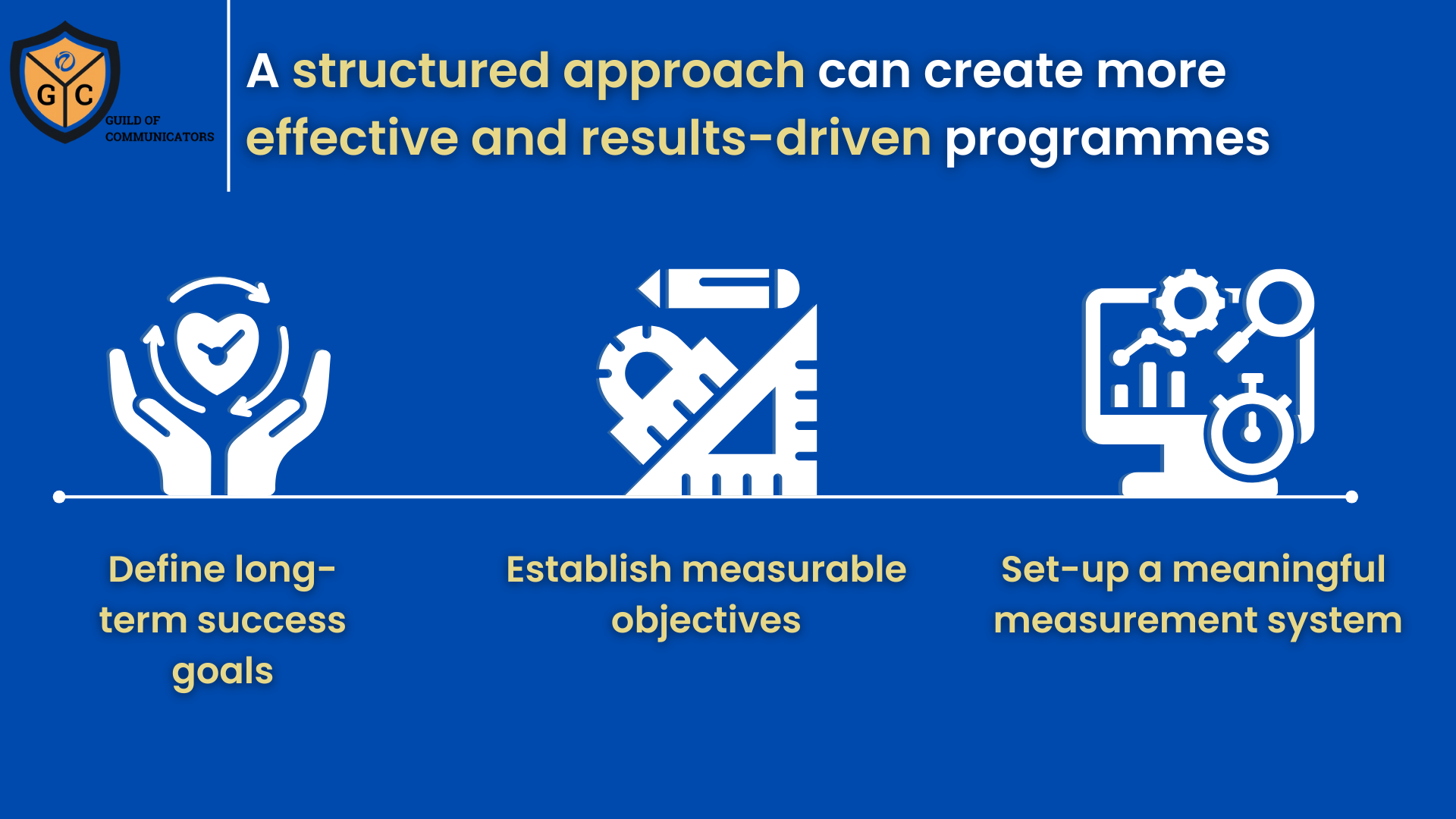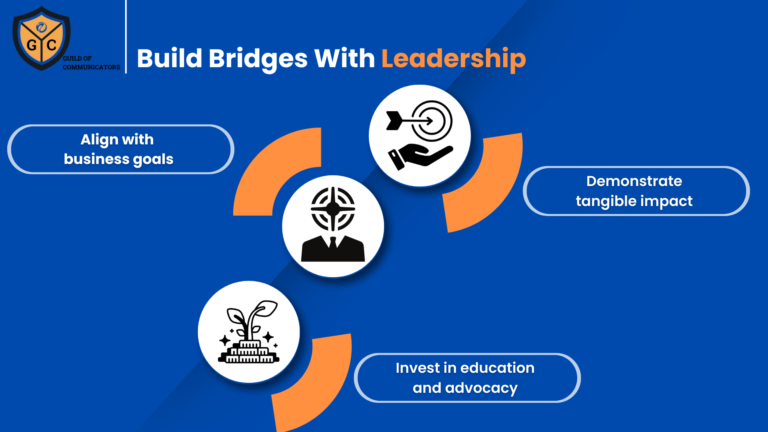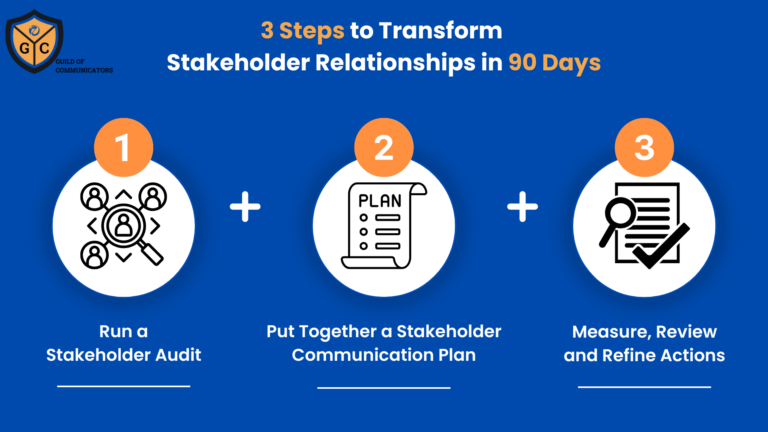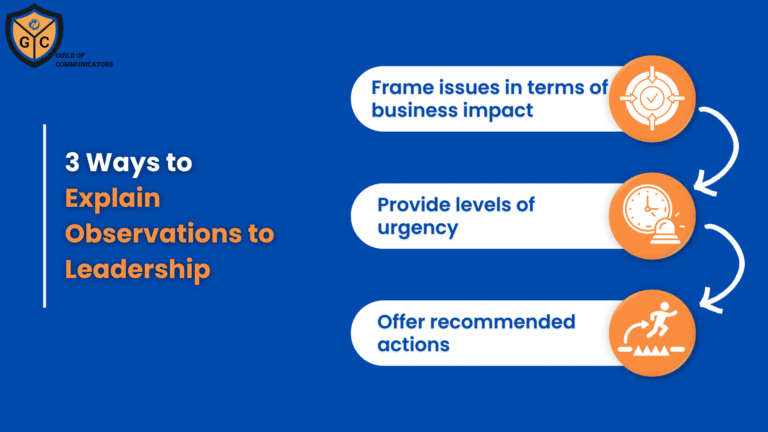A well-structured programme or campaign requires clear alignment between goals, objectives, outcomes, and measurements.
Goals provide direction, objectives define the specific steps needed, outcomes indicate success, and measurements ensure accountability.
When these elements are not properly connected, plans become hard to execute, making it difficult to assess progress or demonstrate impact for the brand or organisation.
How Short-Termism Weakens Goal-Setting
Short-term thinking can undermine the effectiveness of goal and objective-setting in communication programmes. When plans prioritise immediate results over long-term impact, they often focus on tactical execution without a clear strategic foundation. This can lead to fragmented efforts that do not contribute to broader business or organisational goals.
Without a long-term perspective, teams may struggle to align their objectives with sustainable growth. Immediate performance metrics may show positive results, but they do not necessarily indicate progress toward meaningful, long-lasting change. This disconnect can make it challenging to justify continued investment in initiatives that do not appear to drive long-term value.
Additionally, a short-term focus can limit creative problem-solving and strategic thinking. Teams may prioritise easily measurable outcomes over deeper engagement or behavioural change, leading to surface-level success that lacks substance. This approach reduces the potential impact of communication efforts and weakens the overall effectiveness of campaigns and programmes.
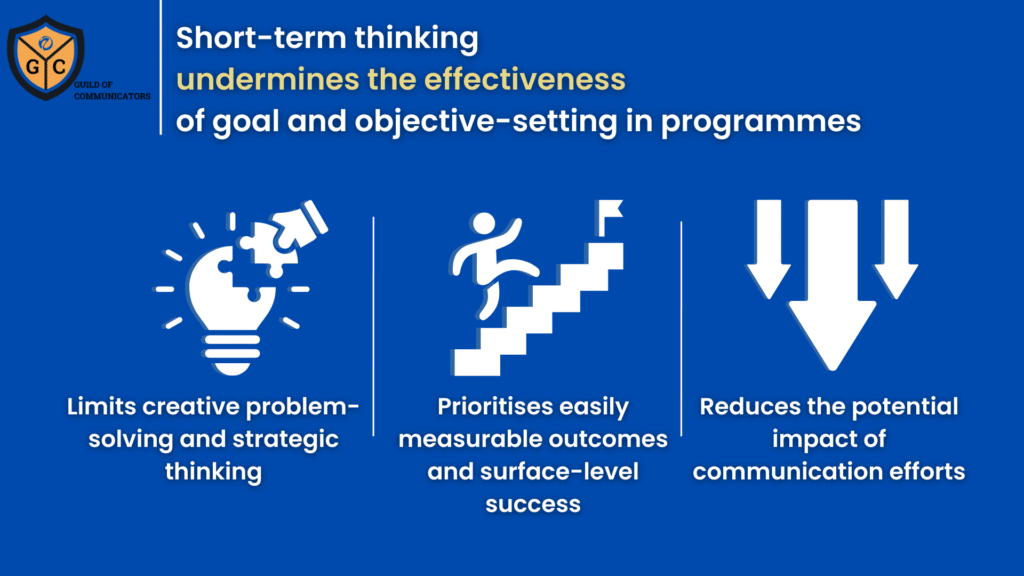
Why Goal Selection Affects Everything That Follows
Selecting the wrong goals can negatively affect both outcomes and measurements. Goals that are too vague, unambitious, or short-sighted fail to inspire teams and often result in ineffective execution. Without clear and meaningful targets, teams may struggle to prioritise efforts or demonstrate success.
When goals are not ambitious enough, they fail to drive meaningful progress. If the benchmarks for success are too easy to achieve, teams may meet their targets without making a real impact. This can create a false sense of accomplishment while failing to contribute to the broader organisational mission.
Conversely, overly broad or unrealistic goals can lead to frustration and misalignment. Teams may find themselves working towards objectives that are too disconnected from day-to-day execution, making it difficult to measure success. Ensuring that goals are both strategic and practical helps maintain focus and enables teams to track their impact effectively.
Strengthening the Link Between Goals and Outcomes
Building a strong connection between goals, objectives, and outcomes from the start ensures that every action taken contributes to a broader purpose. Planning with this structure in mind allows teams to create a roadmap that aligns activities with intended results, reducing the risk of misalignment.
When goals, objectives, and outcomes are clearly linked, decision-making becomes more efficient. Teams can confidently choose strategies and tactics that support the desired impact, rather than reacting to external pressures or short-term needs. This improves consistency in execution and makes it easier to measure progress.
Additionally, well-connected plans allow for better resource allocation. By ensuring that each action ladders up to an overarching goal, teams can focus efforts on activities that generate meaningful results. This reduces wasted time and effort, improving overall efficiency and effectiveness.
How Goal Clarity Strengthens Engagement and Motivation
Having a clear connection between goals and objectives is not just beneficial for strategic planning—it also provides psychological reassurance to teams. When people understand what they are working toward and why it matters, they are more likely to stay engaged and motivated.
Clarity in objectives reduces uncertainty, which can be a significant source of stress in fast-moving environments. Knowing how individual contributions fit into the bigger picture helps team members focus their efforts and feel a stronger sense of purpose in their work.
Furthermore, clear goals and objectives support better decision-making. When expectations are well-defined, teams can assess progress more effectively, adjust strategies when needed, and maintain momentum without losing sight of the overall vision. This fosters a sense of confidence and alignment across the organisation.
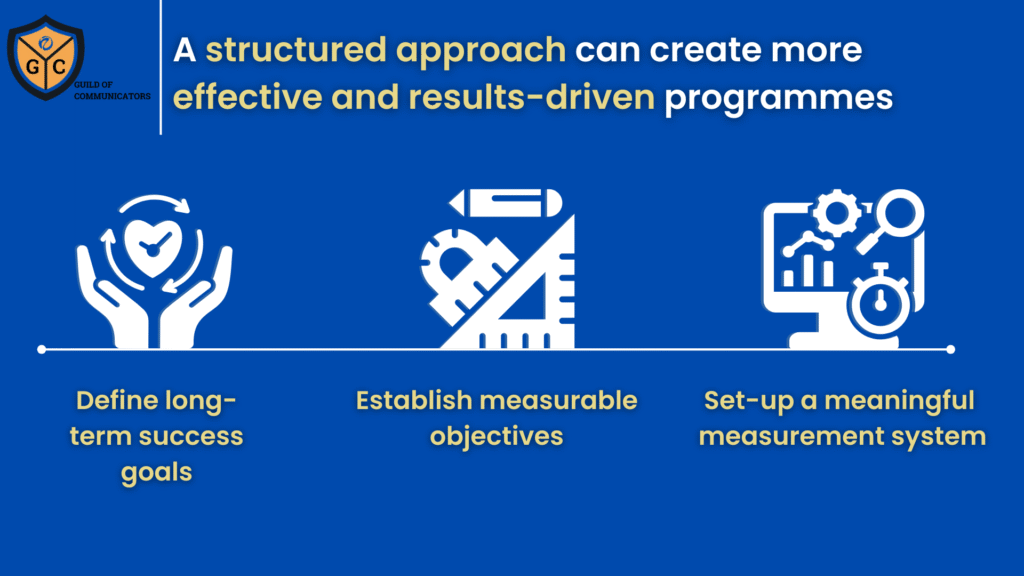
A Three-Step Approach to Linking Goals and Outcomes
By taking a structured approach to connecting goals, objectives, and outcomes, teams can create more effective and results-driven communication programmes.
Define Goals That Support Long-Term Success – Ensure that goals align with broader strategic priorities. Consider both immediate and future needs to avoid setting objectives that are too narrow or disconnected from the bigger picture.
Establish Measurable Objectives – Break down goals into specific, measurable objectives that outline clear steps toward success. Use frameworks like SMART (Specific, Measurable, Achievable, Relevant, Time-bound) to ensure clarity and focus.
Implement a Meaningful Measurement System – Identify key performance indicators (KPIs) that reflect the impact of efforts. Ensure that measurements track progress toward both short- and long-term goals, providing a balanced view of success.
Investing in clear goal setting ensures that efforts are aligned, measurable, and impactful, driving long-term success for the organisation.
*****
Join the Guild of Communicators at www.gocommunicators.com.
The Guild of Communicators (Go Communicators) stands as the preferred community for communicators seeking to elevate their craft. Through our Academy of Excellence, we provide best-in-class frameworks, fit-for-purpose resources, and opportunities that support members in achieving professional excellence.
We provide the following resources, tools and opportunities to members:
- Best-in-Class Resources: We provide our members with access to frameworks, playbooks and tools that empower them to achieve and maintain professional excellence.
- Continuous Learning and Growth: Through our comprehensive training programmes, workshops, delivered digitally, 24/7 and in-person, we support the ongoing professional development of communicators.
- A Supportive Network: GOC fosters a vibrant community where communicators can connect, collaborate, and support each other, creating a network that champions mutual growth and success.
- Shared Knowledge and Expertise: Our members benefit from the collective wisdom and experience of a diverse group of communication professionals, enhancing their skills and perspectives.
Go Communicators is dedicated to amplifying the impact and value that communicators bring to their organisations, highlighting their crucial role in driving success and growth.
We equip our members with the strategies and tools needed to become influential leaders and business partners within their organisations, enhancing their ability to drive positive change and outcomes.
Through our support and resources, communicators can demonstrate clear, measurable outcomes that showcase their value and impact, reinforcing their importance to their organisations.
Join the Guild of Communicators at www.gocommunicators.com
Subscribe to join over 1500+ communicators and brands getting value every Tuesday while reading A Communicator’s Perspective, our weekly newsletter.

